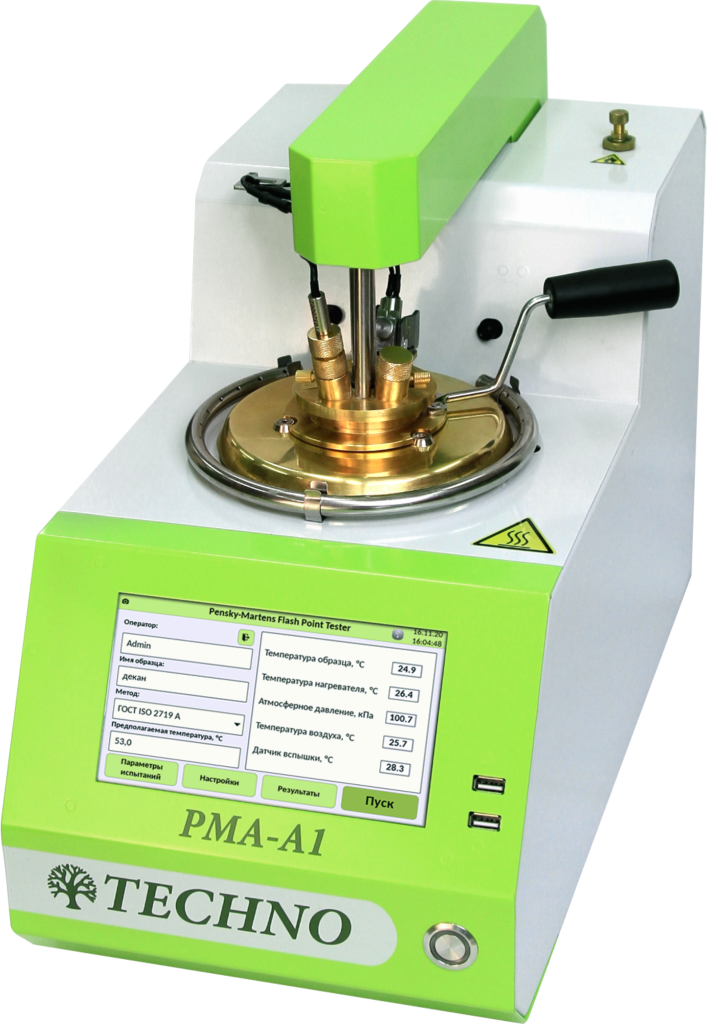GOST R EN ISO 2719
Petroleum products. Methods for determination of flash point in Pensky-Martens closed cup
The scope of the method lies in the fact that a test sample is placed in a test crucible of the Pensky-Martens apparatus and heated in such a way that a constant temperature increase occurs with continuous stirring. The ignition source is lowered at regular intervals through the hole in the crucible lid, at the same time the stirring is stopped. The lowest temperature at which the ignition source ignites the vapor of the test oil and the flame spreads over the surface of the liquid is recorded as the flash point at actual barometric pressure. This temperature is converted to standard atmospheric pressure using equations.
The national standard of the Russian Federation GOST R EN ISO 2719 establishes two methods (A and B) for determining the flash point of flammable liquids, liquids that contain suspended solids, liquids that tend to form a film on the surface under test conditions, and other liquids in the Penski apparatus. Martens with a closed crucible. The methods apply to liquids that have a flash point above 40 °C.
Typically, commercial kerosene with boiling points above 40 °C is tested in accordance with ISO 13736, but they can also be tested in accordance with GOST R EN ISO 2719. Commercial lubricating oils are usually tested in accordance with ISO 2592.
Method A is used to determine the flash point of varnishes and paints that do not form films on the surface, commercial lubricating oils and other petroleum products for which Method B is not suitable.
Method B is used to determine the flash point of residual liquid fuels, liquefied bitumen, waste lubricating oils, liquids that tend to form a film on the surface, liquids containing suspended solids, and highly viscous liquid products such as polymer solutions and adhesives.
The standard cannot be applied to water-based varnishes and liquids that contain highly volatile substances.

